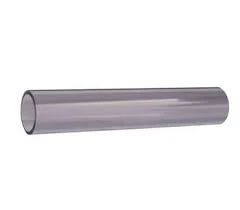Nov . 12, 2024 06:23 Back to list
ppr cold water pipe
Understanding PPR Cold Water Pipes A Comprehensive Guide
PPR (Polypropylene Random Copolymer) pipes have gained significant popularity in modern plumbing systems due to their numerous advantages. These pipes are particularly renowned for their application in cold water systems, where they provide an efficient and durable solution. This article explores the benefits, installation process, and considerations when working with PPR cold water pipes.
Benefits of PPR Cold Water Pipes
1. Durability and Longevity PPR pipes are highly resistant to corrosion, scaling, and chemical damage. Unlike traditional metal pipes, which can deteriorate over time, PPR pipes maintain their integrity for years, making them a cost-effective choice for cold water distribution.
2. High Resistance to Temperature Fluctuations While PPR pipes are often used for cold water applications, they can also withstand low temperatures without becoming brittle. This property ensures that PPR pipes remain functional even in cold climates.
3. Ease of Installation PPR pipes are lightweight and easy to handle, making them simpler to install compared to heavier materials like copper or PVC. The fusion welding method primarily used for PPR joins ensures a leak-free connection that adds to the overall reliability of the system.
4. Reduced Energy Loss The excellent insulation properties of PPR pipes minimize heat loss, which is particularly beneficial in cold water systems where maintaining a steady temperature is essential. This aspect contributes to overall energy efficiency in buildings.
5. Non-Toxic Material PPR is considered a non-toxic material, making it safe for transporting drinking water. It does not leach harmful substances into the water, ensuring the quality and safety of the water supply.
6. Cost-Effectiveness While the initial investment might be comparable to other materials, the long-term savings associated with maintenance and replacement make PPR pipes a cost-effective choice for plumbing applications.
Installation Process of PPR Cold Water Pipes
ppr cold water pipe

Installing PPR cold water pipes requires specific steps to ensure that the system functions efficiently and maintains a long lifespan
1. Planning and Designing Before installation, proper planning and design of the piping system are crucial. This involves calculating the required lengths, the number of fittings, and ensuring that the layout complies with local building codes.
2. Cutting the Pipes PPR pipes can be cut using a pipe cutter or a saw. It is essential to ensure that the cut is straight and clean to facilitate proper joints.
3. Joining the Pipes The fusion welding method involves heating the ends of the pipes and fittings to a specific temperature, then joining them together as they cool. This creates a strong, leak-free joint that is as strong as the pipe itself.
4. Testing the System After installation, it is vital to run a pressure test to ensure that there are no leaks and that the system operates as expected. Any issues should be addressed before the walls are closed or the system is put into use.
5. Regular Maintenance While PPR pipes require minimal maintenance, periodic inspections can help identify any potential issues early, ensuring the long-term integrity of the system.
Considerations When Using PPR Cold Water Pipes
While PPR pipes are an excellent choice for cold water systems, it is essential to consider a few factors
- Temperature Limitations Although PPR is suitable for cold water, its performance can decline at elevated temperatures. Thus, proper application is necessary to maximize its benefits. - Compatibility with Other Materials Integrating PPR pipes with other plumbing materials may require special fittings and adapters to ensure compatibility and maintain a leak-free system. In conclusion, PPR cold water pipes present a modern solution to plumbing challenges, offering durability, efficiency, and safety. Whether for residential or commercial applications, these pipes can effectively meet the demands of modern plumbing systems, making them a preferred choice for many professionals in the field. With proper installation and maintenance, PPR pipes can ensure a reliable cold water supply for years to come.
-
High-Quality PPR Pipes and Fittings Durable ERA PPR & PVC PPR Solutions
NewsJul.08,2025
-
Black HDPE Cutting Board - Durable, Non-Porous & Food Safe HDPE Plastic Cutting Board
NewsJul.08,2025
-
High-Quality CPVC Panel Durable HDPE & PVC Panels Supplier
NewsJul.08,2025
-
Double PE Welding Rod Supplier - High Strength, Durable & Versatile Welding Solutions
NewsJul.07,2025
-
High-Quality PVC-O Pipe Supplier Durable 75mm PVC Pipe & Connections Leading PVC Pipe Company
NewsJul.07,2025
-
HDPE Drainage Pipe Supplier – Durable & Corrosion-Resistant Solutions
NewsJul.06,2025

